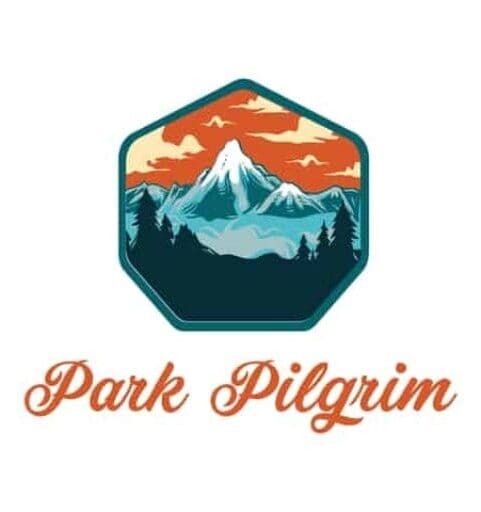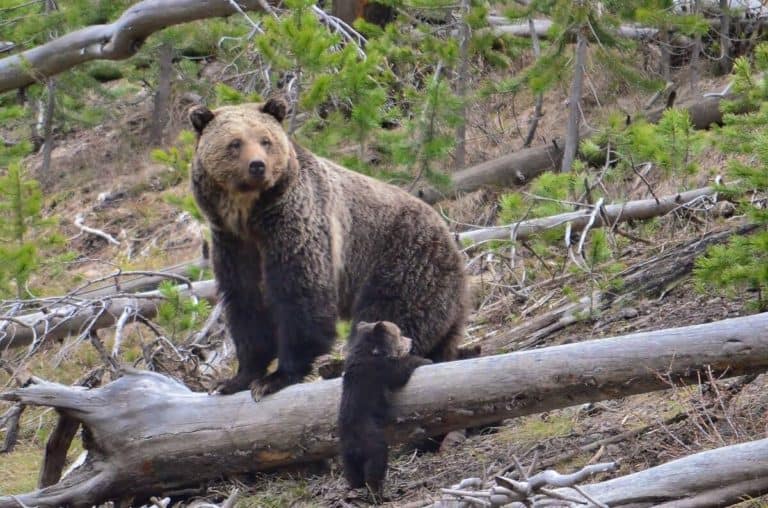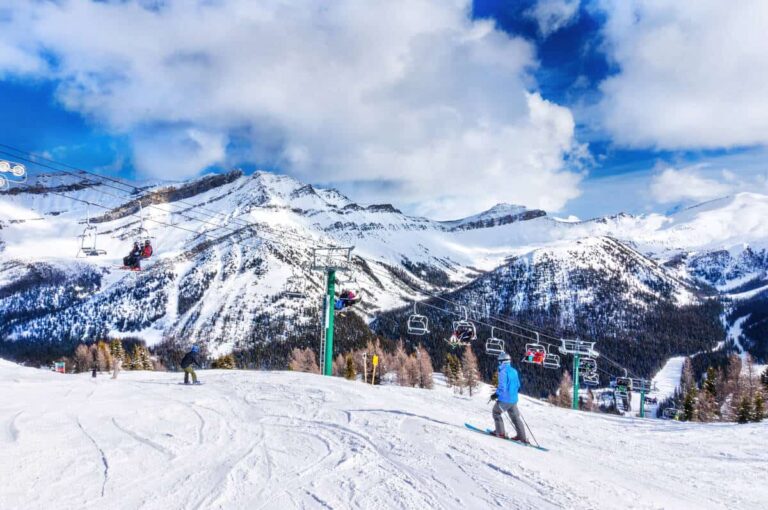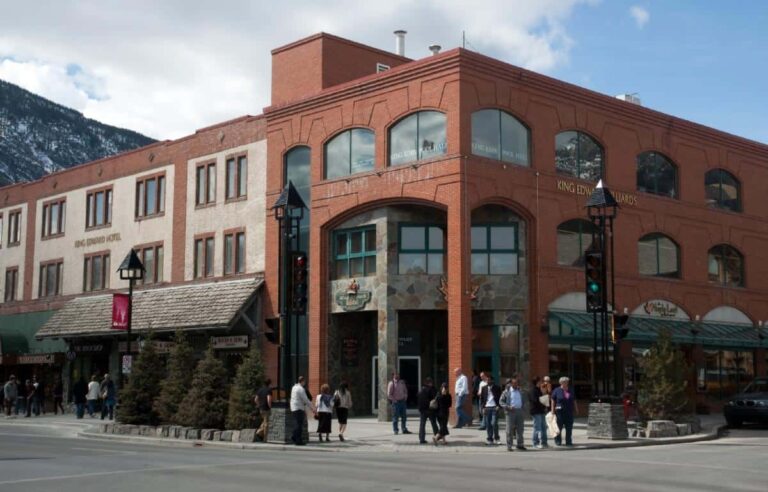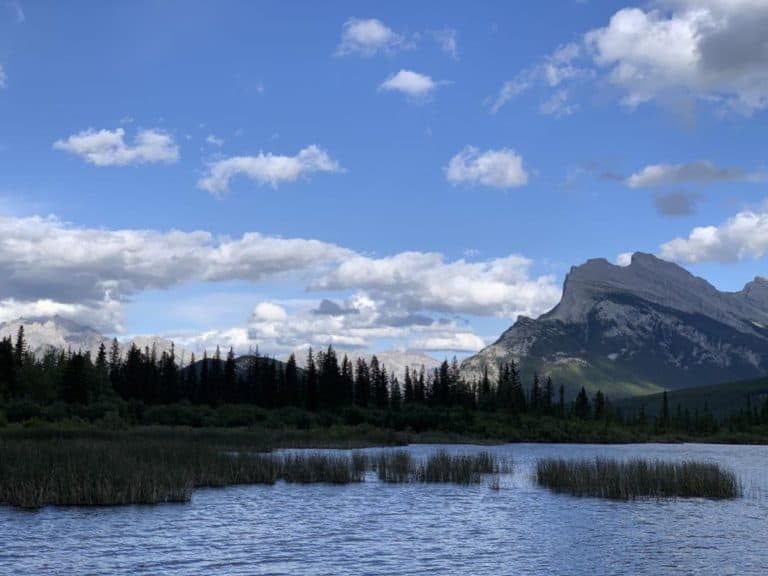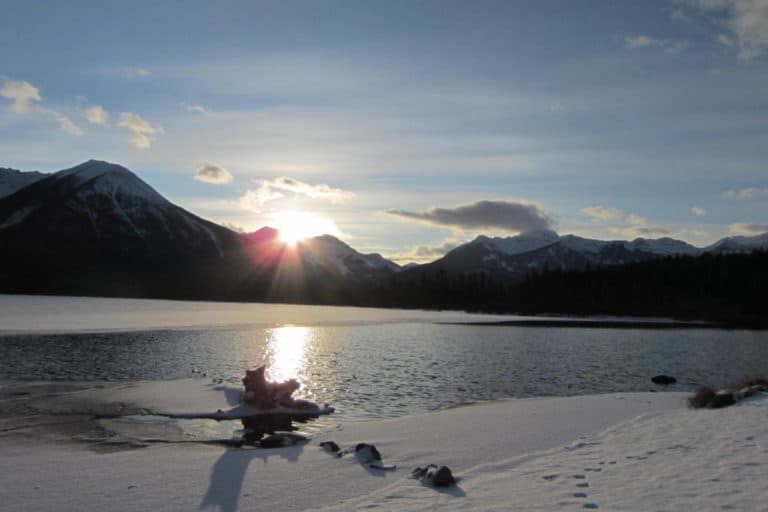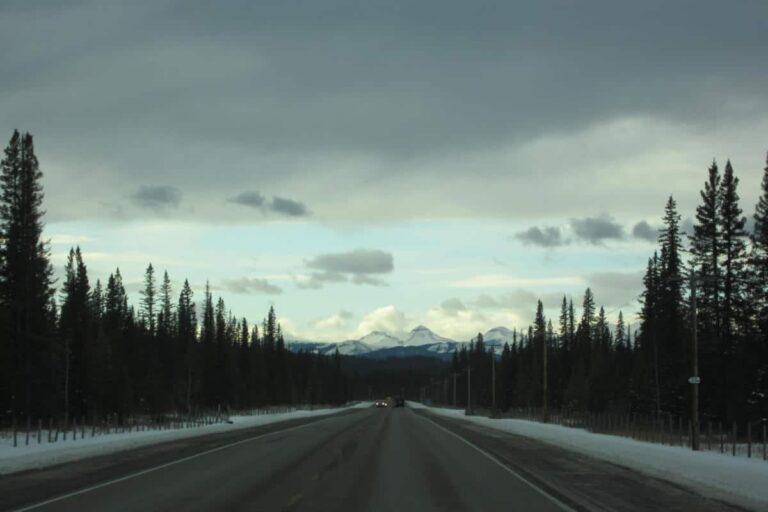Complete Guide to Solo Hiking in Banff (Summer and Winter!)

The abundance of stunning hiking trails in Banff National Park means opportunities galore for the outdoor enthusiast. What if you want to embark on a solo hiking trip in the Rockies? In this post, you’ll read what to consider, how to make it safe, what’s up with bears and more.
Solo hiking in Banff is guaranteed to be a thrilling experience. And with all the opportunities the park offers, there’s always more to explore. However, going at it alone requires different measures than hiking with others.
Below you’ll find everything you should know and make your solo hiking adventure in Banff a success. Alright, without further ado, let’s dive in.
What Are the Best Banff Solo Hiking Trails?
This question is rather tricky to answer, as it depends on preferences and opinions. You can walk any trail as a solo hiker; just always make sure you take the necessary precautions (see below).
Keep in mind that these trails are only suggestions. There are many more in the park that are also worth it.
- Lake Agnes
- Tunnel Mountain
- Larch Valley
- Sulphur Mountain
- Parker Ridge Trail
- Mount Yamnuska
- Bourgeau Lakes
- Grotto Canyon
- Bow Lake
What Is the Best Time for Solo Hiking in Banff?
Generally, the summer season – mid-June to mid-September – is the best time for solo hiking.
First of all, temperatures are the best during this period. Even if you’re on a hike that leads you higher up a mountain, the temperature usually won’t get really low (though always take a sweater and or coat with you).
Furthermore, there won’t be much snow on the trails. In most cases, no snow at all. It’s also very likely that other people will be on the trail. While you might not like this, it’s safer because it limits the risks of a bear encounter.
While the summer period is the best time of the year to hike in Banff, you can hike in the park year-round. If you want to do so outside the summer season, you must ensure that you come well-prepared for the circumstances (snow, ice and low or freezing temperatures). Winter hiking in Banff is possible (see below).
For more information on this subject, keep reading.
Is Solo Hiking in the Rockies Safe?

Yes, if you take the necessary precautions. However, anything can happen in the Rockies, so a hundred percent safety guarantee doesn’t exist. This accounts for both solo hikers and people walking in groups in Banff National Park.
So what are the risks when hiking (solo) in the Rockies, you ask? There are several. If you’re a novice hiker, this might put you off, but all you need to do is take the proper safety procedures as listed below, and you’ll be OK:
1. The most significant issue while hiking in Banff is the weather. It can change any second in the Rocky Mountains. You could receive snow on a nice sunny day, the wind can pick up severely and it might rain, making the trail slippery and therefore riskier.
So bring a warm (fleece) sweater and/or a water and windproof jacket to prepare for sudden cold. Even if the weather stays nice and sunny, you’d still need this if you’re hiking to higher altitudes. Temperatures can drastically drop when you get higher up the mountains.
2. Always make sure you’re wearing sturdy hiking boots. While not all trails will be as challenging, and you might be able to do some easier ones on sneakers or other more regular footwear, the trail will get slippery if it starts to rain.
Decent hiking boots might prevent you from slipping where traditional footwear won’t. You can imagine this can be particularly important when you’re on a steep mountain slope.
3. Bring a physical map of the area. As cell phone reception isn’t great in the park and, in many cases, non-existent, it’s a good idea to bring along a physical map for obvious reasons.
If you’re on a well-frequented trail in summer, you should be fine without one in most cases, as there are always people nearby. But a map can be a welcome tool if you deviate from the trail for whatever reason and end up being lost.
You can get hiking trail maps in the Banff and Lake Louise Visitor Centres. Or download one from the internet and print it.
You can also download a map of the area onto your phone. It works. But you’ll be dependent on your phone’s battery life. If your phone dies, your map will be inaccessible.
You can bring a power bank to extend your phone’s battery life, but a physical map simply always works :).
Banff Visitor Centre
Opening hours (daily): 9 am – 5 pm
Address: 224 Banff Avenue, Banff
Phone: +1 403 – 762 1550
E-mail: pc.banff-vrc.pc@canada.ca
Lake Louise Visitor Centre
Opening hours (daily): 9 am – 5 pm
Address: Samson Mall, 201 Village Rd, Lake Louise
Phone: +1 403 – 522 3833
E-mail: pc.lakelouiseinfo-infolakelouise.pc@canada.ca
4. Always carry bear spray. Yes, even in winter, as bears occasionally leave their dens. If you encounter a bear, you can defend yourself in case of a (very unlikely) attack.
This tip is crucial if you’re hiking solo. Groups of people always make (more) noise than you as a solo hiker. You want to shout regularly when hiking solo to ensure a bear hears you. When it does, it usually wanders off to avoid contact with humans.
However, doing so does not guarantee to avoid a bear encounter. So it’s good to know you’re carrying bear spray.
5. Bring enough food and water. It’s obvious why this is important. To prevent you from carrying too much weight in your backpack, take several high protein and energy bars and energy drinks with you.
6. Bring a satellite phone. This might sound extreme, but a satellite phone can save your life in areas with no cell signal. They can be essential on long hikes with very few people on the trail.
You can find several good models. A satellite phone ain’t cheap, but it can be a life-saving investment. People who own an iPhone 14 model don’t need a satellite phone. It has a satellite function built in.
Solo Hiking as a Female in Banff
If you’re a woman going to hike in Banff National Park, you might want to be extra cautious.
To keep safe, try to hike the more traveled trails, like Tunnel Mountain, Sulphur Mountain, Lake Agnes, Larch Valley and Bow Lake. If you can, try to tag onto a group.
Before you head out, tell family and friends where you’re heading and your expected return time, and text them when you’re back.
Solo Overnight Hiking
While you should prepare for a single-day solo hike, if you want to include an overnight stay, there are extra things to consider. In addition to the above tips, here are some additional ones:
- Bring a book or movie on your phone, so you’ll have something to do at night during the quiet hours.
- When choosing a site, use common sense. Ideally, someplace you have been previously. Or spend the night at one of Banff National Park’s several backcountry campgrounds. Just make sure you reserve a spot before leaving. The amenities you need for a secure stay are available at most of these campgrounds, including (in many cases) lockers for securing your food and/or possessions.
- Build up to it. Before undertaking a true wilderness overnight adventure, camp alone but still in a crowd if you are afraid.
- Always make sure you start your trip well-prepared. It keeps you confident (enough) at times of doubt or setbacks.
Solo Hiking in Winter

As you can imagine, solo hiking in winter can be much more arduous.
First of all, many trails will be closed as they are in avalanche-prone terrain, limiting your hiking options.
Secondly, there will be snow everywhere, making hiking more strenuous. It requires above-average fitness on many trails. So make sure you value your fitness level realistically.
Another important factor influencing winter hiking possibilities is the weather circumstances. They are much trickier than in summer. Not only can temperatures drop well below zero (sometimes as much as -20˚Celcius (-4˚F) or even more), you might end up in a snowstorm which could make hiking (more) dangerous.
So preparing well before you hit the trail is essential. To ensure you can withstand the cold, dress in enough layers of appropriate clothes, wear a warm cap and pair of gloves and pack an extra sweater and (ski) pants.
Then there’s also the risk of avalanches. While trails with a heavy risk will be closed by Parks Canada, it’s not guaranteed that you won’t encounter an avalanche.
Want to know what free activities Banff has to offer in winter? I wrote a post about it. Just click the link!
Solo Hiking Equipment
When you’re hiking solo, you need some essential materials to keep you warm, safe, and fed, along with valuable items for emergencies. Below you’ll find a convenient checklist of the things you need to bring along.
- Food (gels and bars) and drinks (energy drinks)
- Warm clothing, depending on the season (warm sweater, (ski)pants, gloves, hat)
- Sturdy pair of hiking boots
- Sturdy backpack that’s not too big yet allows you to bring along essential stuff
- First-aid kit
- Bear spray
- Knife
- Physical map
- Satellite phone
- Torch (in case you, for some reason, end up hiking in the dark, which is really not recommended)
- Emergency blanket (especially useful in winter)
Solo Hiking Tips
There are a few things you should do or would be wise to do when going on a solo hiking trip. Much of it is in preparation for your trip.
1. Familiarize yourself with the route. How long is it, how many hours does it take approximately, how many altimeters do you need to cover and how strenuous is the trail? Also, what’s the trail like?
2. Tell someone where you are going. Tell a friend or family, or even the receptionist at your hotel. Also, inform them of your scheduled return time.
3. If you’re not a very experienced hiker, you might want to start with highly frequented hikes in Banff. It gives you a safer feeling, makes you feel more at ease and gives you the experience and confidence you might need for longer and more strenuous hikes you might want to do.
4. Keep track of time. This is more important than you think. You want to ensure you’re not on the trail when it gets dark. The dark makes navigating much more difficult as your vision will be limited. You might not notice bumps or other irregularities on the trail, making you more prone to injury.
5. Start your hike in time. This relates to the paragraph above, keeping track of time. The earlier you start, the more likely you’ll be able to finish your hike during daylight.
6. Take pictures of waypoints and turns. This can be crucial if you’re lost or unsure where you need to go. You’ll have reference material assuring you that you’ve been here before and are going in the right direction.
7. Know when to turn around. If weather conditions become iffy, you feel you’re unsure if you’re following the correct route, or you’re likely to return in the dark, you’d better turn around to prevent you from ending up in a precarious situation.
What about Solo Hiking and Bears in Banff?
This is a big thing for most (inexperienced) hikers in Banff. The park is home to black bears and grizzlies. While their numbers are not big, you might encounter a bear during your hike.
Before you head out, know how to tell a black bear and a grizzly apart.
Also, learn how to react in case of an attack (even though this is extremely unlikely).
Solo hikers are more prone to it than people who are hiking with other people because you’ll make much less noise. As mentioned above, make sure you’ll make enough noise (shout, tie a bear bell to your backpack) to warn a bear you’re approaching. This way, you’ll significantly decrease the likeliness of a bear encounter.
If you encounter a bear, ensure your bear spray is ready and within reach. Therefore, avoid packing it in your backpack, tucked away somewhere at the bottom, where you can’t easily access it.
If you want to read more about bear spray and how to operate it, please read 19 Things You Need to Know about Bear Spray.
